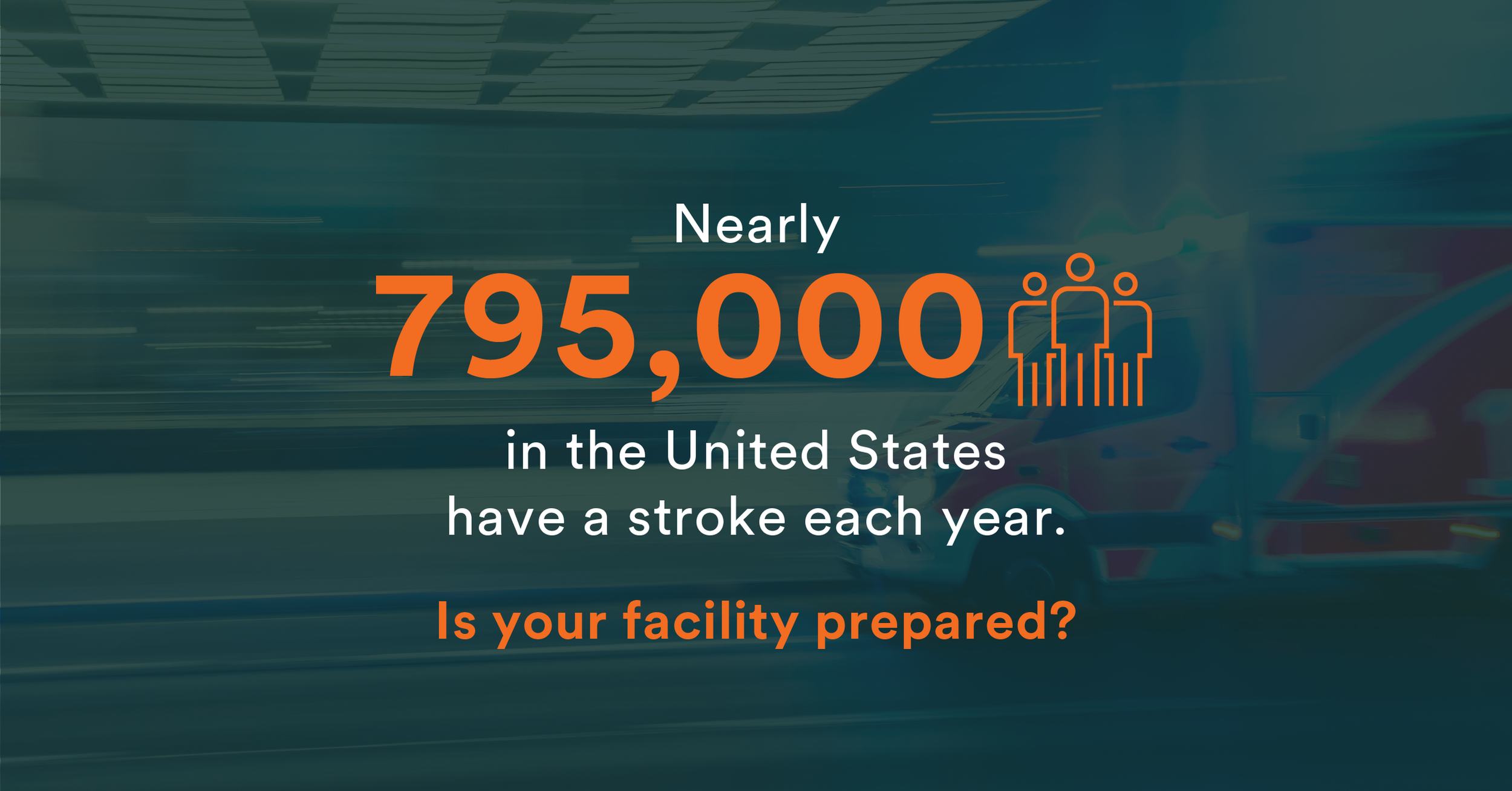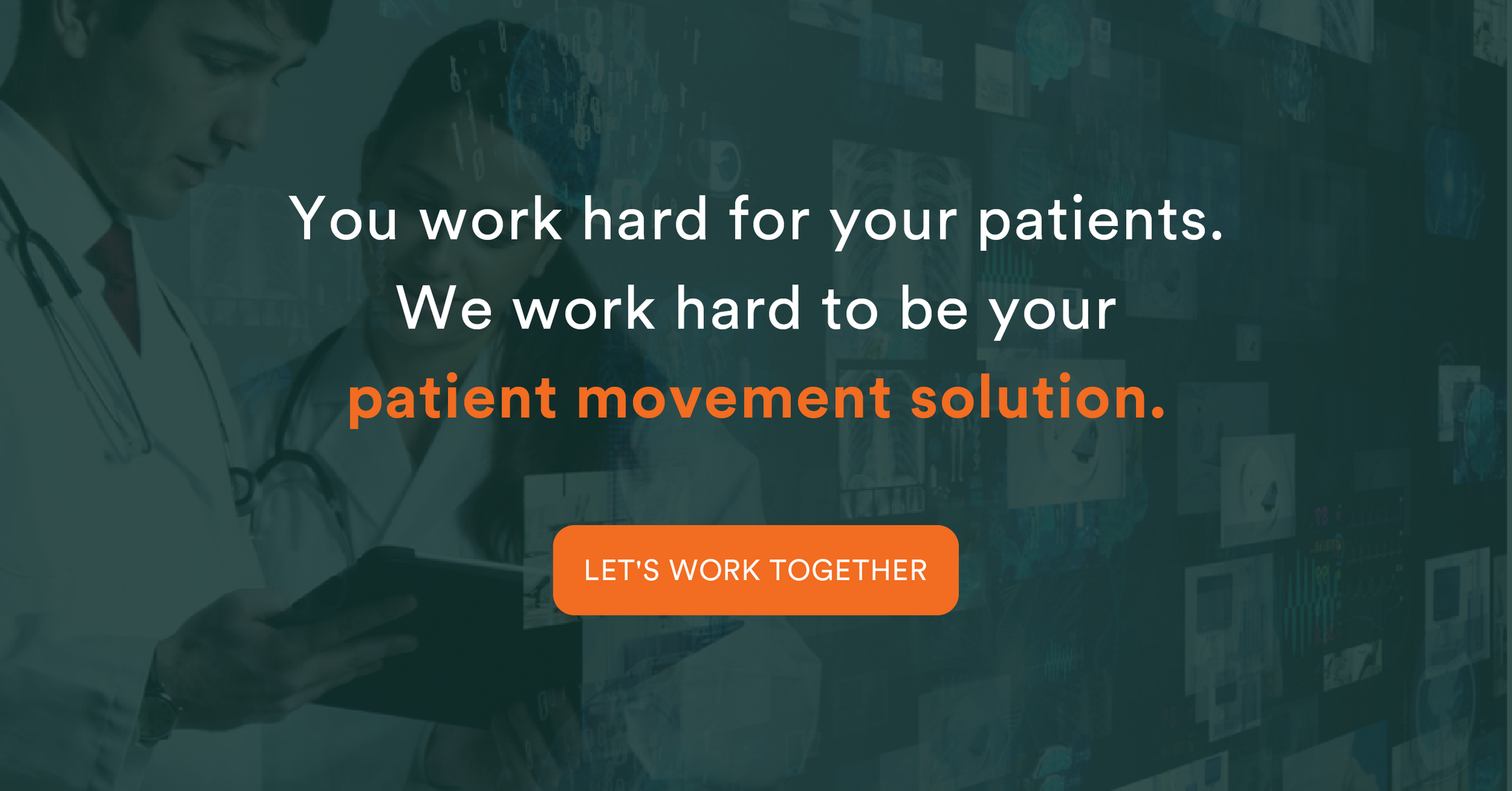
Approximately 795,000 people in the United States have a stroke each year.1 But many people who suffer from a stroke don’t live within easy distance of a healthcare facility — not just for emergency purposes, but for preventative measures like doctors’ appointments.
A doctor’s appointment might be a ten-minute drive and an hour or two out of their day in urban areas. However, in rural or frontier areas, a doctor’s visit could be one or more hours each way and at least half a day of missed work. “Rural patients — especially with lower-income jobs — often don’t have the time or financial flexibility to do that.”2
The Complexity of Stroke Diagnosis and Treatment
One way of the complexities in managing stroke is how it is diagnosed on that first presentation. Myocardial Infarction (“MI” or heart attack) can be diagnosed by electrocardiogram (ECG), blood tests, and other non-interventional activity within minutes of being admitted to the emergency department, while those with symptoms of stroke have a quick bedside history and neurologic assessment for the preliminary diagnosis, followed by a computed tomography brain scan to assess what type of stroke may be occurring.
Evidence-based medicine shows that obtaining a patient history (last known time well), completing a standardized functional neurologic assessment via a stroke scale, and getting them to the CT scan as quickly as possible provides the patient a best opportunity for a correct diagnosis and treatment. Timely CT exams, access to radiologists, neurologists, and labs equipped for neurological intervention are key limiters to rural treatment of stroke.
Considering these diagnostic and treatment complexities, time is the greatest challenge in this situation. Every nurse or physician caring for a stroke patient is against the clock once the patient arrives in the ER. Time is brain: “Up to two million brain cells die every minute when oxygen and nutrients are cut off.”2
CT scans are part of the standard of care when diagnosing stroke patients. Even though the CT scan takes just minutes to complete, it then requires a radiologist’s interpretation after sending the images digitally, which can take up to 45 minutes. Once all the data points and tests results are in, a diagnosis of what type of stroke, and what type of intervention is needed, can be made. Adding to that is time spent finding an accepting physician at a hospital, securing emergency medical services (EMS), and preparing the patient for what is next, to transfer to a primary or comprehensive stroke center for further care and evaluation.
Stroke cases don’t happen in rural hospitals every day, so these providers stay sharp and prepared through training and predetermined processes and workflows for time-critical cases like this. In spite of this, a rural facility might receive 10-30 cases per year, but they likely won’t be seen by the same caregivers.
Rural Facilities Cope with Shortages in Resources
The further a patient lives from a healthcare facility, the more time can be lost before accessing care. If staffing is a challenge, there may not be a full-time CT person on staff — one must be called in, adding time to the already fragile “time is brain” window. To add to that, one resource has found it can take over an hour to receive the scan results.2 The time increases can be the difference between recovery and disability.
Another obstacle rural facilities face in stroke cases is that they may not store fibrinolytic, a clot-busting drug that is needed to treat some types of strokes. It’s expensive, and once reconstituted, it expires quickly. Since resources and funds are scarce in rural facilities, it’s not something that can be risked wasting. Research confirms that rural patients with stroke are “less likely to receive intravenous thrombolysis or endovascular therapy and had higher in-hospital mortality than their urban counterparts.”3
Putting a Proactive Plan in Place
Every healthcare practitioner strives to provide the best possible care for their patients. When your patients can be the people you live amongst in rural communities, there is an almost tribal pressure to protect and take care of your own.
When resources aren’t available, it’s necessary to put a plan in place so that the process can begin as seamlessly and quickly as possible. In many frontier areas, transport is the biggest delay. Patient movement systems can help save time and lives [link to Mission Control]. If the patient needs to be transferred — sometimes over 250 miles away or more — it can mean important “brain-time” for the hospital to have a patient movement platform in place that helps the care team align the appropriate destination and transport mode with the patient’s needs.
What Must Happen for Change to Occur
These are all reasons why rural hospitals need to have a stroke champion, standardization of processes, and support from the administration when putting processes in place for sustainability. In one such case, a nurse in rural Kansas decided to champion the case of strokes in her hospital. After completing a review of strokes over several years and viewing the CDC website for stroke mortality, she was determined to move the needle and implement standardized stroke care. She got others in her hospital excited about it, and they worked together to find resources to increase fibrinolytic usage for the appropriate patients and lower the rate of strokes in their county. Dr. Karen E. Joynt Maddox, senior study author of Urban-Rural Inequities in Acute Stroke Care and In-Hospital Mortality, states: “… cardiovascular and other health outcomes are much worse in rural areas… This study shines light on one area where changes in care, such as the introduction of telehealth or other programs, could really make a difference.”4
The gap between geographic and resource limitations in rural communities shouldn’t be a factor in the access or quality of care people receive for strokes. Fundamental changes to processes and facing the existing inequities and disparities in healthcare must occur.
On the frontier, it’s a reality that we can have all the passion in the world, but we need resources. We need plans. We need change.
And we need champions.
If you’re interested in a patient movement solution for your healthcare facility, contact us today.

Sources
- Stroke. CDC. May 3, 2021.
- Closing the gap for stroke patients in rural areas. Cliff Mehrtens. December 2, 2020.
- Urban-Rural Inequities in Acute Stroke Care and In-Hospital Mortality. Gmerice Hammond, Alina A. Luke, Lauren Elson, Amytis Towfighi, Karen E. Joynt Maddox. Stroke. 2020;51:2131–2138.
- Stroke patients more likely to die in rural hospitals than in urban ones. American Heart Association News. June 18, 2020.
- Stroke survival rates worse in rural areas, study says. Julia Evangelou Strait. June 18, 2020.


